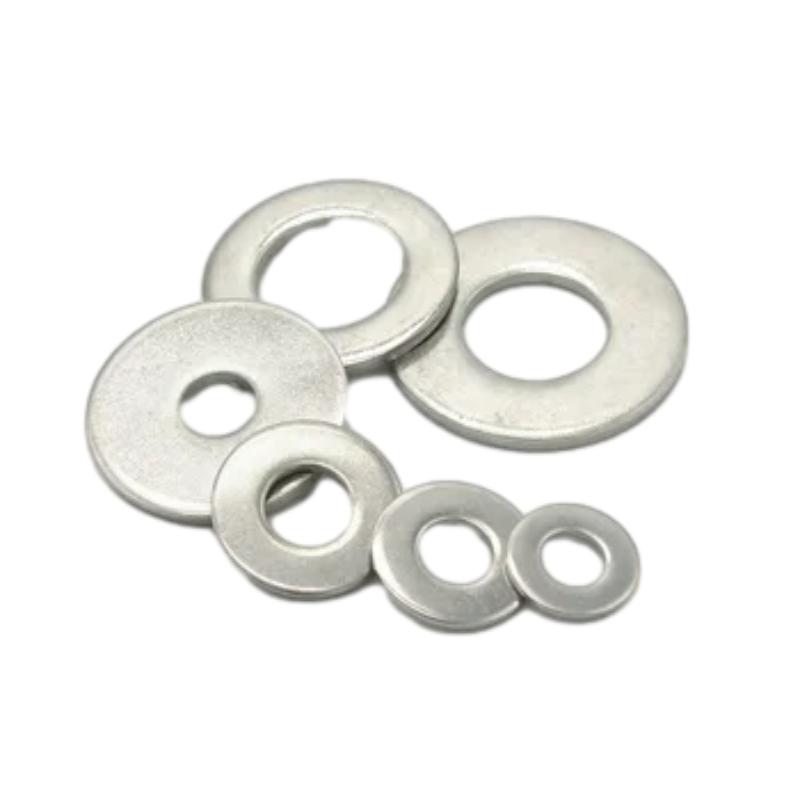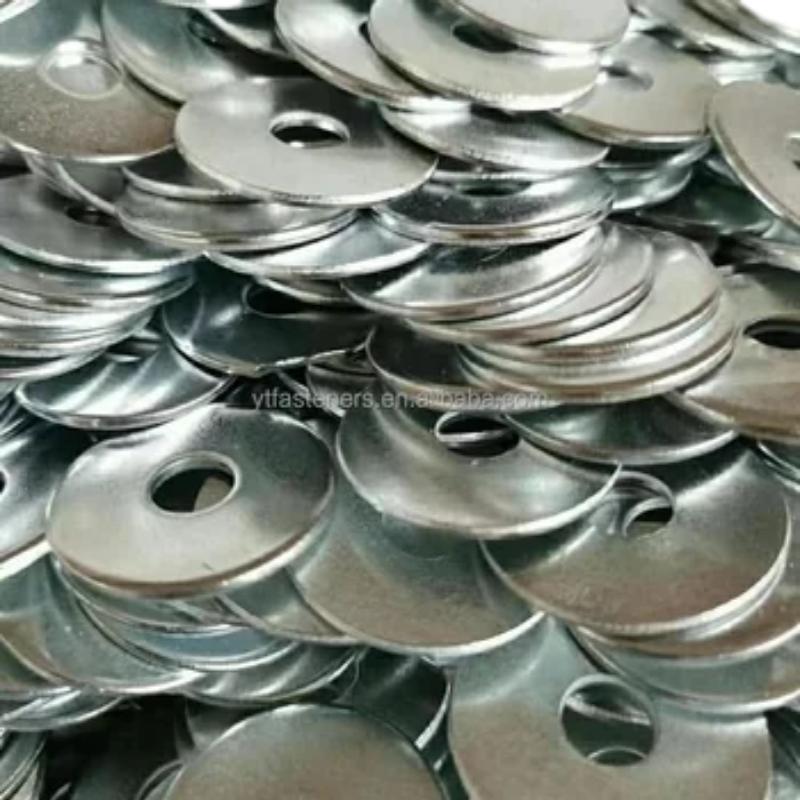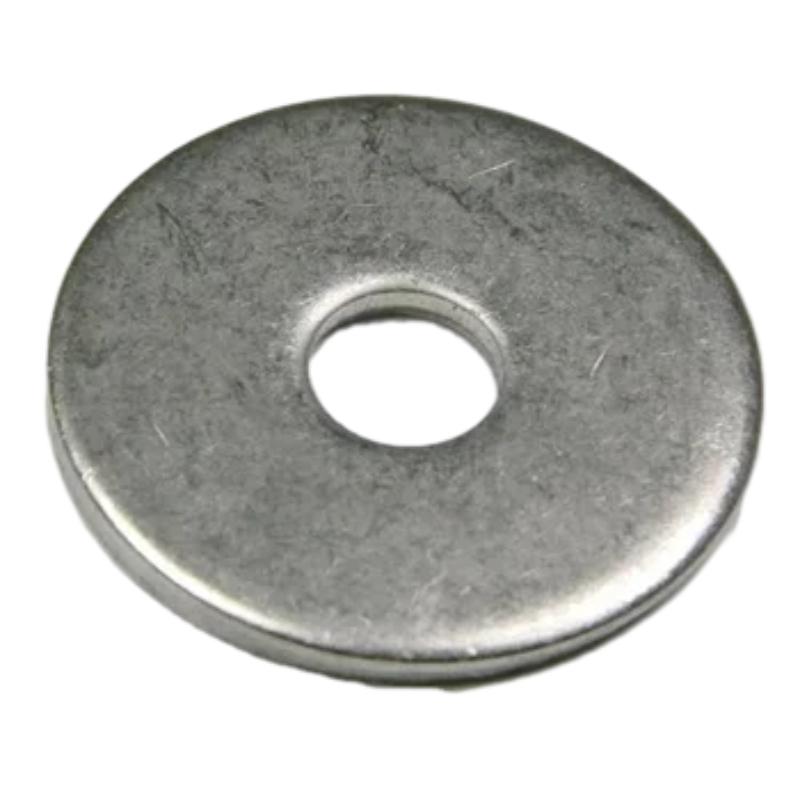ag. . 02, 2025 06:20 Back to list
Premium Zinc Plated Flat Washers: Corrosion Resistant
In today's fast-evolving industrial landscape, zinc plated flat washers have become pivotal in mechanical assemblies, offering critical benefits like enhanced corrosion resistance, superior load distribution, and increased longevity. Whether it's 1 4 x 1 1 4 fender washer, 3 16 fender washer, or specified according to din flat washer standards, choosing the right washer is essential for structural safety and performance.

This in-depth resource covers the latest market data, detailed manufacturing processes, compliance with international standards (DIN 125, DIN 9021, ISO), and key insights for professionals sourcing high-quality zinc plated flat washer—with a technical focus on Factory Price Carbon Steel DIN125 White Zinc Plated Grade 4.8 Flat Washer as an industry-leading example.
1. Industry Trends: Demand & Technological Evolution
- Global Market Size: The global fastener market, including zinc washers, was valued at USD 90+ Billion in 2023 (MRFR Report), with CAGR >4% through 2028, driven largely by industrial construction and automotive.
- Sector Adoption: Petrochemical, metallurgy, HVAC, water supply, railway & marine sectors exhibit rising demand for anti-corrosive, high-duty washers.
- Standardization: DIN 125, DIN 9021 & ISO standards are becoming the baseline for international trade, ensuring washer zinc plated solutions meet stringent industry criteria.

2. Technical Parameters of Popular zinc plated flat washer Types
| Type | Standard | OD (mm) | ID (mm) | Thickness (mm) | Material | Finish | Typical Application |
|---|---|---|---|---|---|---|---|
| Flat Washer | DIN 125 | 6-60 | 3-50 | 0.5-5 | Carbon Steel | Zinc Plated | General Assembly |
| Fender Washer | DIN 9021 | 20-100 | 5-40 | 1-3 | Steel / SS | Zinc Plated / SS | Large Load Distribution |
| 1 4 x 1 1 4 Fender Washer | ANSI B18.22.1 | 31.75 | 6.4 | 1.5 | Carbon Steel | Zinc Plated | Automotive, Sheet Metal |
| 3 16 Fender Washer | DIN 9021 | 19 | 4.9 | 1.2 | Steel | Zinc Plated | Metal Roofing, Fixtures |
DIN 125 flat washer dimensions: The most commonly referenced metric for machine assembly; typical tolerances ±0.1mm; available in M4–M56 sizing.
DIN 9021 washer: Used when a greater load-spread is needed, especially with softer materials.
Zinc Plated Flat Washer - Dimensional Comparison
% Market Use by Washer Type
- ■ Flat Washers (DIN 125)
- ■ Fender Washers (DIN 9021, ANSI)
- ■ Others (Sealing, Cupped, etc.)
3. Zinc Plated Flat Washer Manufacturing Process: Step-by-Step
Precision and quality in zinc plated flat washer production is essential for critical assemblies. Here, we detail the workflow for the Factory Price Carbon Steel DIN125 White Zinc Plated Grade 4.8 Flat Washer:

Advantages: Our washers are manufactured via multi-station progressive stamping followed by white zinc plating to ISO/ANSI standards, ensuring high tensile strength, uniform oxide protection, and lasting durability.
4. Factory Price Carbon Steel DIN125 White Zinc Plated Grade 4.8 Flat Washer: Technical Data Sheet
| Parameter | Our Product | General Market Washer |
|---|---|---|
| Standard | DIN 125 | DIN 125/No-name |
| Material | Q235 Carbon Steel | Mild Steel/Unknown Grade |
| Grade | 4.8 | 3.6/4.8 |
| Zinc Plating Thickness | ≥8μm | 3-5μm |
| Salt Spray Resistance | ≥48h (No Red Rust) | 24-36h |
| Dimensional Tolerance | ±0.1mm | ±0.2mm |
| Certification | ISO 9001:2015, RoHS, SGS | None / Self-cert |
| Lifespan (Neutral Ph) | >10 Years | 5-8 Years |
Corrosion Resistance Over Time
5. Application Scenarios & Case Studies
Zinc plated flat washers are integral to:
- Petrochemical pipelines: Providing robust galvanic shielding in highly acidic/alkaline environments.
- Heavy metallurgical plants: Withstanding vibration while retaining tensile properties.
- HVAC & Water supply: Minimizing sealing loss at joints, especially in municipal projects.
- Automotive manufacturing: Used in chassis and body panel assembly for anti-creep safety.
- Marine/Shipbuilding: Reducing corrosion and stray current damage.
A European water utility adopted DIN 125 zinc plated flat washers across 26,000 bolted joints in its main supply line retrofit. After 18 months, 0 failures due to rust or creep were recorded, vs 2.2% failure using galvanized only in prior years. Installation time dropped 14%, and overall lifetime cost was reduced by 6.8%.

6. Manufacturer Comparison & Customization Options
Quality Certifications: Before choosing a supplier, verify for ISO 9001:2015, SGS, or RoHS certification.
Our Strength—20+ Years OEM/ODM: YT Bolt has collaborated with Siemens, ABB, and CNPC, supporting global clients with tailored packing, marking, and special-dimension solutions.
Customization Available:
- Custom OD, ID, and thickness per din 125 washer dimensions
- Options for heavy zinc, colored (Cr6+ free), black, or passivated plating
- Branded laser engraving for identification, batch traceability
- Small batch prototyping within 7 days, mass production 10–18 days
| Supplier | Standard Options | Custom Engineering | Lead Time (days) | Industry Certifications |
|---|---|---|---|---|
| YT Bolt | DIN 125/9021/ANSI | Yes (CNC, marking, plating) | 7–18 | ISO, SGS, RoHS |
| General Import | DIN 125 only | Limited | 15–28 | Self-declared |
| OEM (Low Cost) | DIN 125 | No | 21–30 | None |
7. Service Commitment & Support
- Delivery Period: Prototyping: 7 days; Bulk: 10–18 days ex-factory.
- Warranty: 12 months on manufacture defects; extended corrosion-resistance on request.
- Customer Support: 24/7 tech service, batch tracking, full compliance documents and MSDS available.
- 700+ Enterprise Clients: Collaborations include ABB, Siemens, CNPC, State Grid, etc.
FAQ: Technical Insights on Zinc Plated Flat Washers
8. Final Thoughts & Industry References
Selecting the right zinc plated flat washer—whether for automotive, heavy industry, or water infrastructure—requires a blend of technical knowledge, up-to-date standards, and trusted supply networks. By focusing on certified products, proven manufacturing, and verified performance data, you ensure reliability for the most demanding applications.
- Market Research Future, Global Industrial Fasteners Market Report 2024
- ISO 7089:2017 Flat washers — Product grade A, ISO.org
- Engineering Stack Exchange, "Washer Standard Tolerances and Sizing", FAQ Archive
- Springer Materials, "Corrosion Protection Methods for Steel Fasteners", Technical Handbook
- ASM International, "Surface Treatments and Platings", ASMinternational.org


